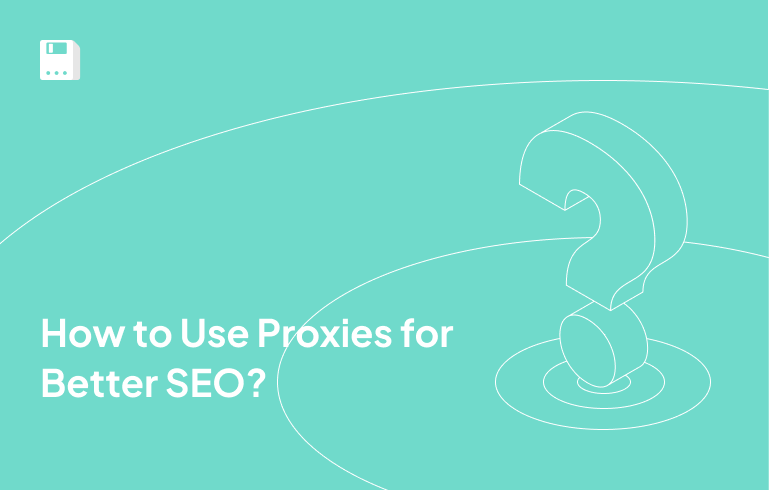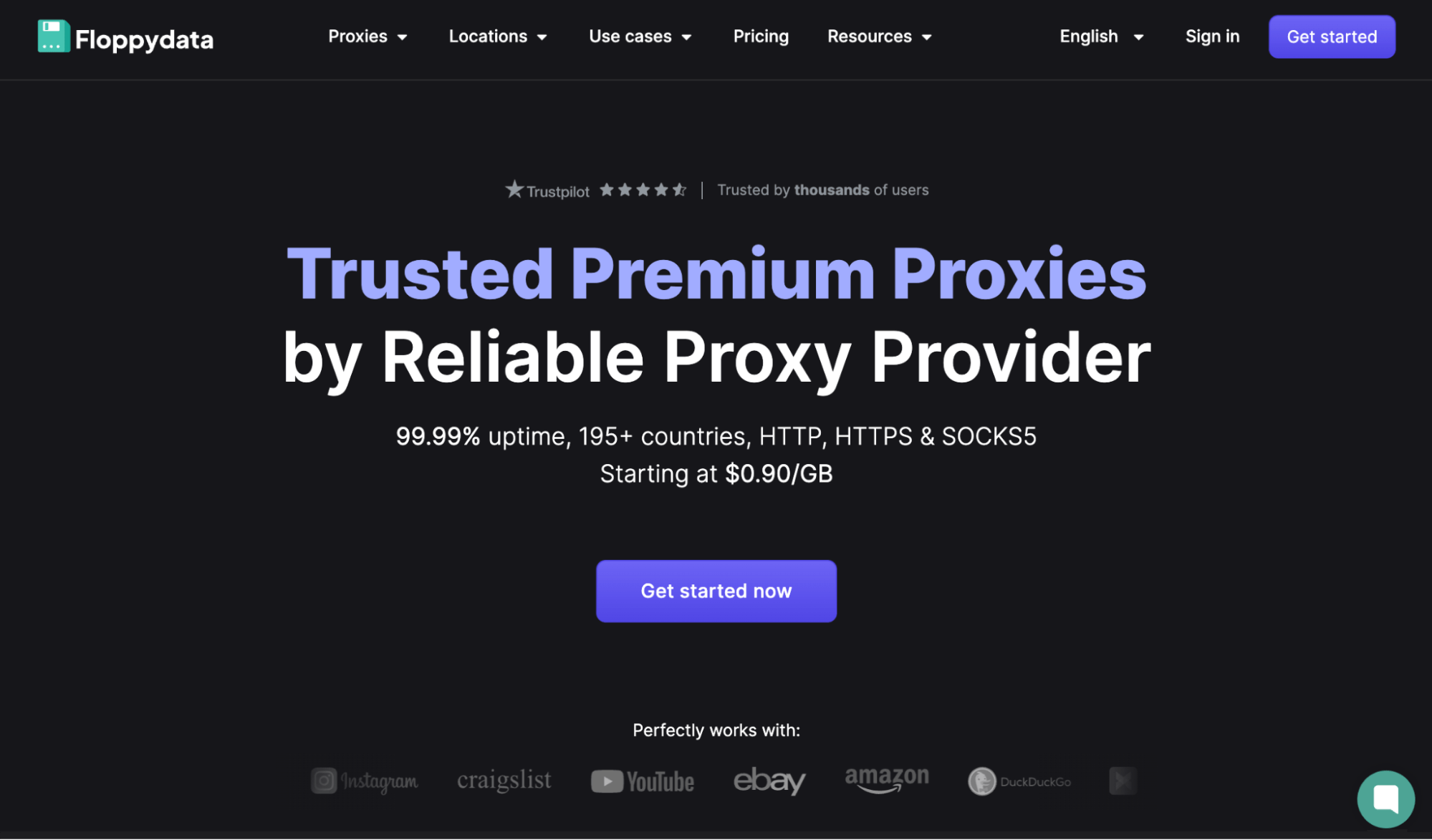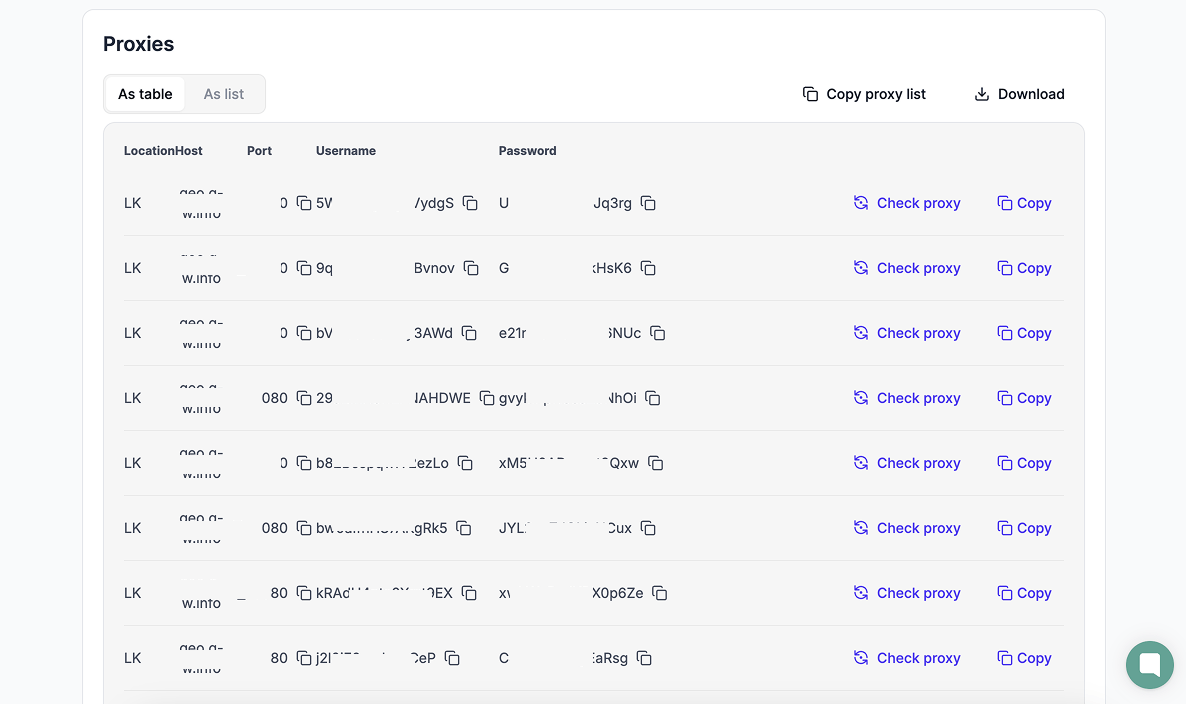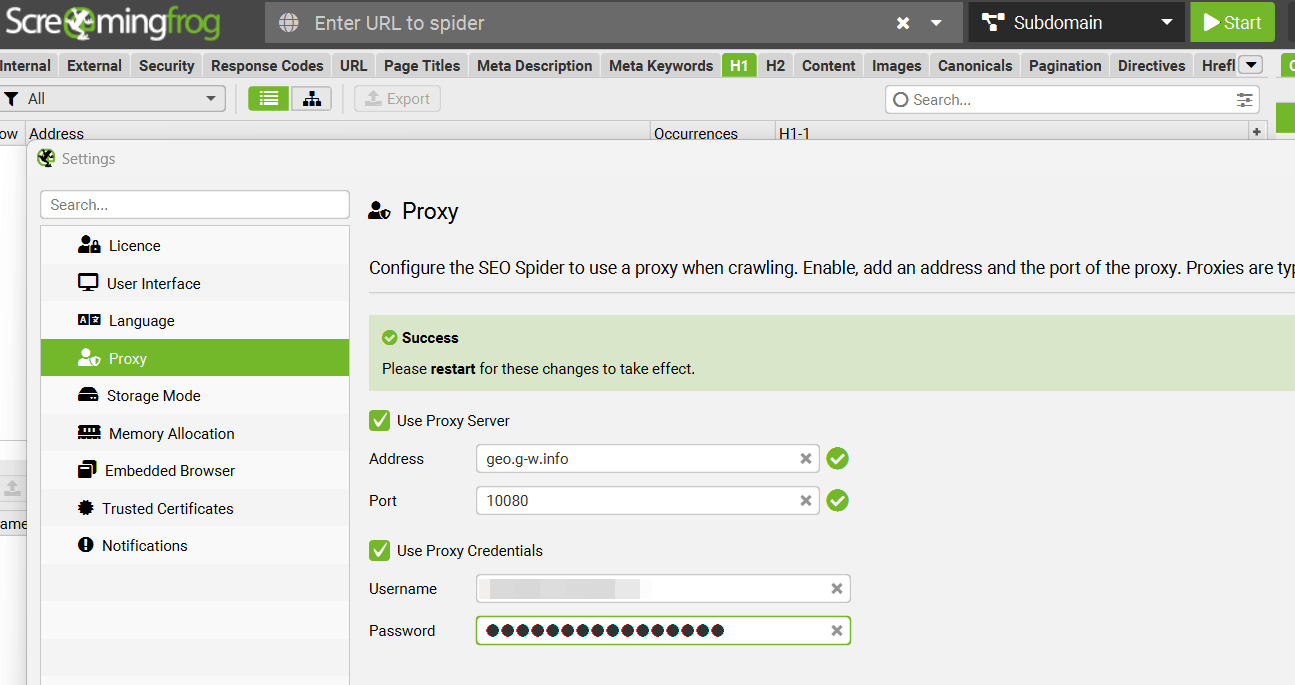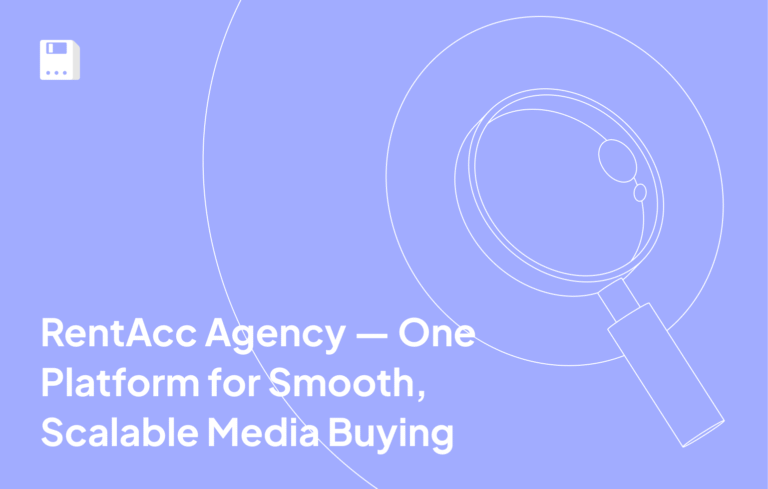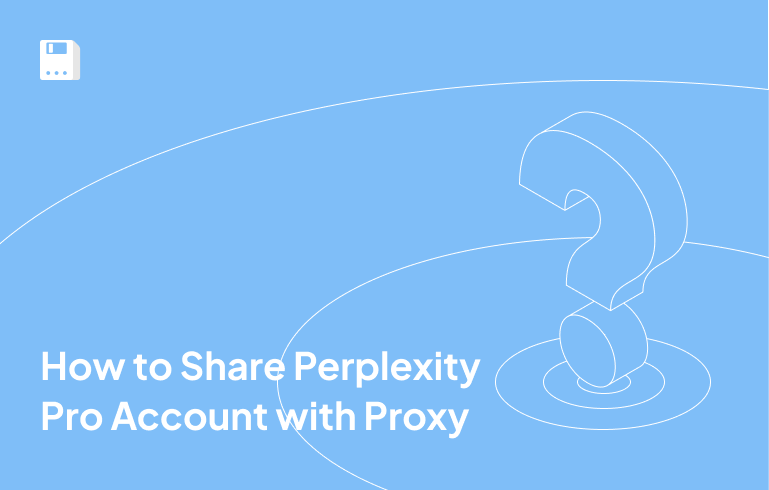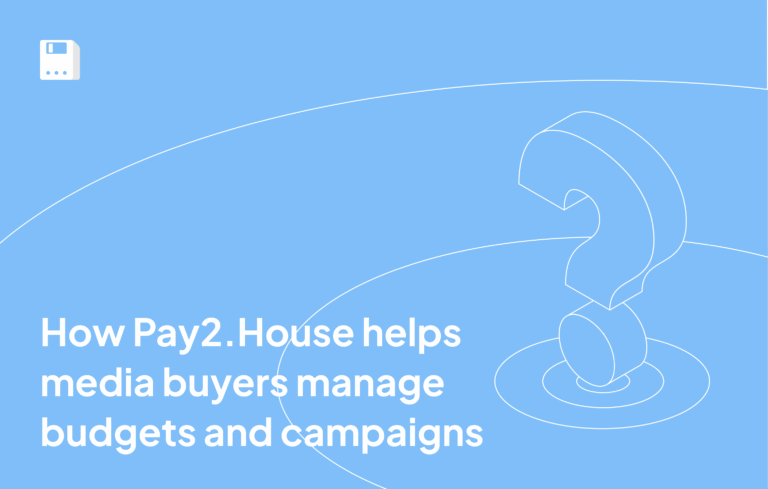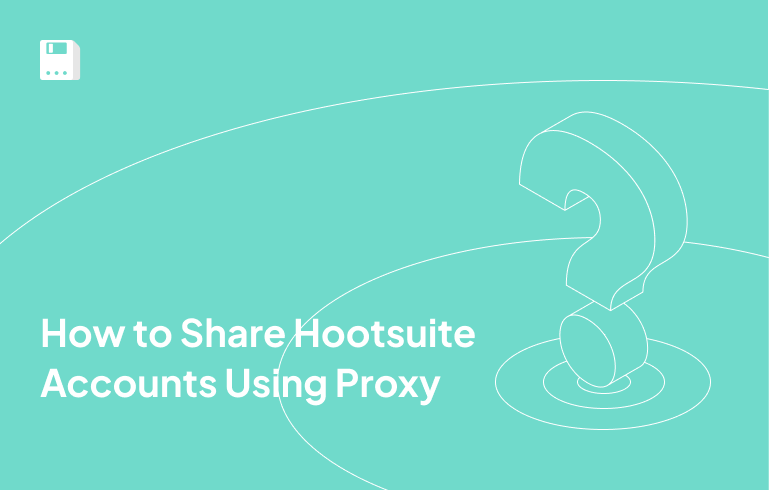When I first started with SEO, I had no idea what a proxy really was. I only knew it helped keep things private. But once I understood how it worked, it became a core tool in my SEO work.
In this article, I’ll share how I use proxies in real-world SEO campaigns, which proxy types work best, and how to get started.
What is a Proxy (and an SEO Proxy)
A proxy server is an intermediary gateway between your device and the Internet. It hides your real IP and routes your traffic through another IP.
That means websites see the proxy’s address, not yours. This gives you privacy and helps you bypass geo-restrictions or IP-based blocks.
So, what’s SEO got to do with it?
Search Engine Optimization (SEO) is about improving a website’s visibility on search engines like Google. To do it well, you need a lot of data and smart SEO tactics. And that’s where proxies come in.
A SEO proxy is simply a proxy used specifically for search-related tasks like tracking keyword positions, scraping competitor data, analyzing backlinks, or testing rankings in different countries.
Once I realized how much easier and safer these tasks became with a proxy, I never looked back. For me, proxies aren’t simply about hiding my IP, they’re essential for me to collect more data, avoid blocks, and run my SEO campaigns without friction.
Can SEO proxies really improve rankings? Here’s what I found
Proxies won’t change your rankings overnight. But in my experience, they give you the advantage to make smarter, faster SEO decisions, and that does improve results.
I once ran into strict rate limits while doing bulk keyword research. Google started blocking requests, throwing CAPTCHAs, and slowing down my SEO platforms. Switching to rotating proxies fixed it instantly. I could pull full reports again, without disruptions.
Another time, I used city-level residential proxies to check how search results varied by location. That visibility helped me update content for each region. With that, local rankings improved noticeably, and traffic grew in every target region.
While I researched this more, I came across a few examples that really stood out. One agency used proxy-powered scraping to build full SEO strategies and reported a 35% boost in average client rankings. Another retail brand refined its geo-targeted pages using proxies and saw a 20% increase in local visibility.
Proxies are a smarter way to approach SEO. They give you access to richer data, more accurate platforms, and deeper research opportunities. With that, you can build stronger strategies and see real improvements in search performance.
That’s why I started using FloppyData, a reliable way to keep my SEO ops fast, clean, and unblockable.
What proxies help me do in SEO
Every SEO campaign I run has one thing in common. I wasn’t able to get the data I needed in the normal way.
Whether it’s scraping search results, tracking rankings across countries, or running outreach across multiple platforms, I quickly run into limitations. Blocks, rate limits, bans, and skewed location data.
Proxies are how I break through.
They don’t only make SEO tasks possible. They make them scalable, accurate, and safe. Here’s how I used proxies across six key steps of a real SEO campaign to collect cleaner data, stay anonymous, and run outreach without getting flagged.
Keyword research at scale
Before anything else, I needed a large list of localized keywords. But standard tools hit me with API limits or showed skewed results based on my location.
So, I used FloppyData’s rotating residential proxies to scrape Google Suggest, People Also Ask, and related searches from over a dozen countries. Each proxy acted like a local user, which meant I could pull keyword ideas as if I were searching from Berlin, Toronto, or Delhi.
In just a day, I had a rich keyword list segmented by country, search intent, and difficulty with no API caps and no IP bans.
SERP scraping without getting blocked
Once I had my keywords, I needed to see what kind of content ranked for them. But scraping Google in bulk always gets tricky. The minute you hit it too hard, you’re either blocked or thrown into CAPTCHA hell.
This is where proxies made the difference. I fed my keyword list into a Python scraper using FloppyData’s rotating IPs. Every request came from a fresh, residential IP and, more importantly, from the right country. No blocks, no throttling.
Within hours, I had thousands of clean SERP snapshots across markets. This helped me reverse-engineer competitor content strategies by location.
Backlink prospecting by region
For link-building, local relevance matters. So I searched for outreach targets using geo-specific Google queries like:
site:.uk “write for us”
site:.ca intitle:”submit guest post”
Normally, Google would catch on fast and either throttle or block me. But by assigning a new proxy to each request, I slipped under the radar.
I scraped hundreds of potential link partners like blogs, directories, and media sites, then enriched the data with contact emails. Proxies made it feel like I had a local researcher in every region.
Rank tracking across countries
Once content went live and backlinks started rolling in, it was time to measure impact. But rank tracking across borders is messy without proxies; all I saw were rankings from my own IP region.
So, I automated daily rank checks using proxies in target countries. For every keyword, I used a matching proxy to simulate a local search and pulled the real position.
These localized rank reports became my campaign heartbeat, showing exactly where we were winning and where to double down.
Technical SEO audits at scale
We also needed a clean crawl of thousands of pages both ours and competitor sites. But large-scale crawling tools like Screaming Frog often get slowed down or blocked when hitting big sites repeatedly.
Using a proxy for Screaming SEO Frog, I split the crawl across multiple rotating IPs. This helped me run parallel audits without triggering security defenses or tool limits.
I uncovered broken internal links, orphaned pages, and metadata gaps on competitor sites to get useful insights for our own technical optimization plan.
Managing multiple accounts for campaigns
For certain outreach campaigns, especially on platforms like Facebook, Reddit, and 4chan, I needed multiple accounts. The problem? These platforms are quick to ban you even for minor slip-ups like logging into two accounts from the same IP.
That’s where proxies really helped me out. I assigned a unique proxy to each account session by giving each one a separate IP and location. No cross-contamination. No bans.
This helped me safely run Reddit threads, FB group promotions, and 4chan community seeding without risking account bans or burning my main profiles.
Proxy types and what each one is best used for in SEO
Below, I’ll walk you through the proxy types I rely on most and when to use each for maximum impact.
Residential proxies
These proxies use real residential IPs assigned by ISPs, which makes them look like regular users to websites and search engines.
- I rely on them for geo-targeted SEO, like checking search results in different cities or countries.
- They’re great for scraping SERPs, testing local content, or running a proxy for Semrush when you want to avoid detection.
- I also use them to verify how ads or search snippets display in specific regions.
Datacenter proxies
These come from data centers, not ISPs, so they’re faster and more cost-efficient, but easier for sites to detect.
- I use them when I need speed over stealth, like bulk keyword ranking checks or technical SEO audits.
- They’re my go-to for platforms like Screaming Frog or when automating routine SEO reports at scale.
- Moreover, they’re the ideal proxy for Key Collector when I’m digging through large keyword databases.
Rotating proxies
Rotating proxies change the IP with every request or session, which makes them hard to detect and block.
- I use these when I’m collecting large sets of SEO data, like backlink profiles or search volume from APIs that throttle static IPs.
- Rotating proxies help me avoid CAPTCHAs, rate limits, and bans, especially helpful with platforms like Similarweb, Ahrefs or Semrush. If you’re dealing with data-heavy research, using a proxy for Similarweb can make the process smoother and far more reliable.
- Moreover, FloppyData’s rotating proxy pools have been especially useful for me. Their IPs refresh automatically and distribute the load, so I can scrape consistently without interruptions.
Mobile proxies
Mobile proxies use IPs from actual 4G or 5G mobile networks, which search engines trust as real mobile user traffic.
- I use these to test mobile-first results and optimize for mobile UX, especially on local or speed-sensitive SERPs.
- With FloppyData’s mobile proxies, I can simulate real user behavior from mobile devices and analyze mobile SERPs in any target location.
- It’s been useful for mobile-specific audits and tuning content for mobile Core Web Vitals.
How I use proxies to boost SEO
Below are the exact steps I follow from choosing the right provider to setting up, integrating, and running proxies.
1. Choose a trusted proxy provider
The first step is selecting a reliable proxy provider. For SEO, that means
- Fast connection speeds
- A wide range of proxy types (residential, mobile, datacenter)
- Clean IP reputation and high uptime
I use FloppyData because it checks all the boxes above, and their residential proxies are fast and flexible, mobile proxies tap into 4G/5G networks, and datacenter IPs are great for speed-heavy scraping. It’s my go-to proxy for SEO across all types of SEO campaigns.
2. Set up proxies
Once you’ve picked a provider, the next step is getting your proxies live and ready to use.
With FloppyData, the setup process is quick and beginner-friendly. The dashboard makes it easy to manage proxy pools, view credentials, and download your proxy list in a few clicks.
- Go to floppydata.com and sign up or log in.
- On the dashboard, you’ll see your available traffic, proxy types, and usage graph.
- Click “Create proxy pool” and follow prompts (choose type, location, protocol, quantity, session type)
- After setup, go to “Proxy pools” and click “View proxies” related to your proxy pool.
- Scroll down to “Proxies” section and you’ll see your proxy details such as host, port, username, and password.
You can copy individual proxy credentials or download the full list as .txt, which is perfect for bulk import into other platforms.
3. Integrate with SEO tools
Once you have proxies, connect them to your SEO stack.
- Use residential proxies for localized rank tracking
- Add mobile proxies to tools that simulate mobile search behavior
- Datacenter proxies work well for high-volume scraping
Popular platforms like Screaming Frog, Semrush, and Ahrefs support proxy input fields. Just paste in your FloppyData proxy string and you’re good to go.
4. Test, monitor, and use proxies
To make the most of proxies.
- Use tools like Scrapy, Octoparse, or Selenium for large scraping tasks
- Rotate proxies automatically to avoid bans
- Monitor usage from your FloppyData dashboard in real time
- Re-run failed requests or missed content using backup proxies or retry logic
Tip: Always test a few queries first to make sure your configuration works smoothly.
Why I recommend FloppyData over other best SEO proxies
FloppyData stands out for three simple reasons: flexible pricing, wide use case coverage, and a beginner-friendly setup. Whether you’re scraping SERPs, looking for a proxy for Ahrefs, running multiple social accounts, or doing technical audits, they have proxies from residential to datacenter to mobile. Plans start as low as $0.90/GB, to make it affordable for both small projects and high-volume campaigns.
Getting started is easy. Sign up, choose a proxy type, and you’re live in minutes. With support for platforms like Google, Gmail, Facebook, WhatsApp, Instagram, TikTok, YouTube, Discord, X, Snapchat, Reddit, LinkedIn, and more, FloppyData gives me everything I need in one place.
FAQ
How do proxies improve SEO performance?
Proxies enable large-scale keyword research, localized SERP scraping, backlink prospecting by region, multi-country rank tracking, and technical audits - without IP bans, CAPTCHA blocks, or skewed data. Residential rotating proxies from FloppyData help collect accurate, scalable SEO insights across markets.
Which proxy types are best for different SEO tasks?
Use residential proxies for geo-specific scraping, SERP checks, and stealth.
Use datacenter proxies for high-speed bulk tasks like technical audits or mass keyword ranking.
Select proxy types based on stealth vs. speed according to your SEO needs.
Share this article:
Table of Contents
Proxies at $1
Get unlimited possibilities

